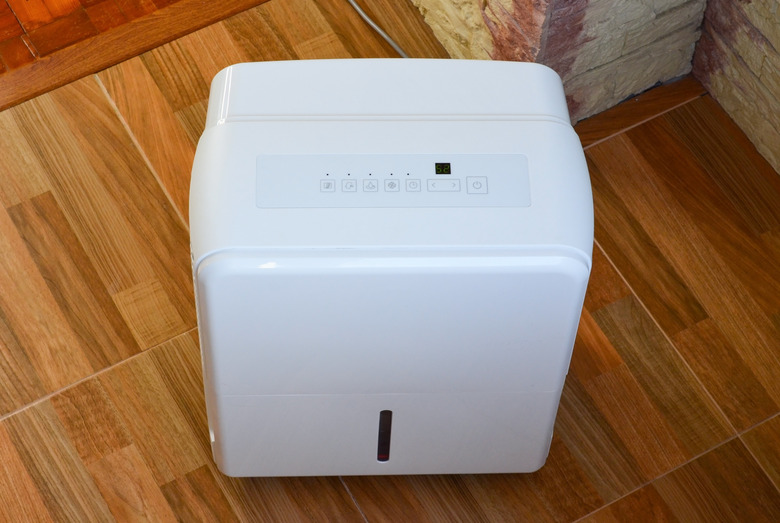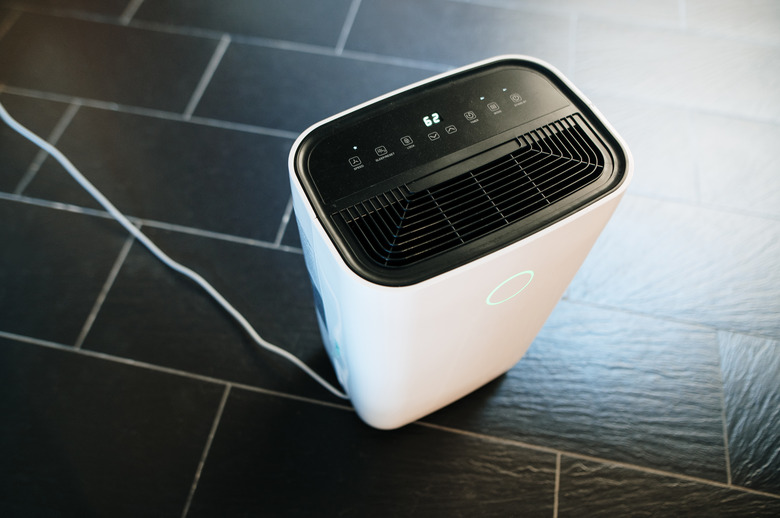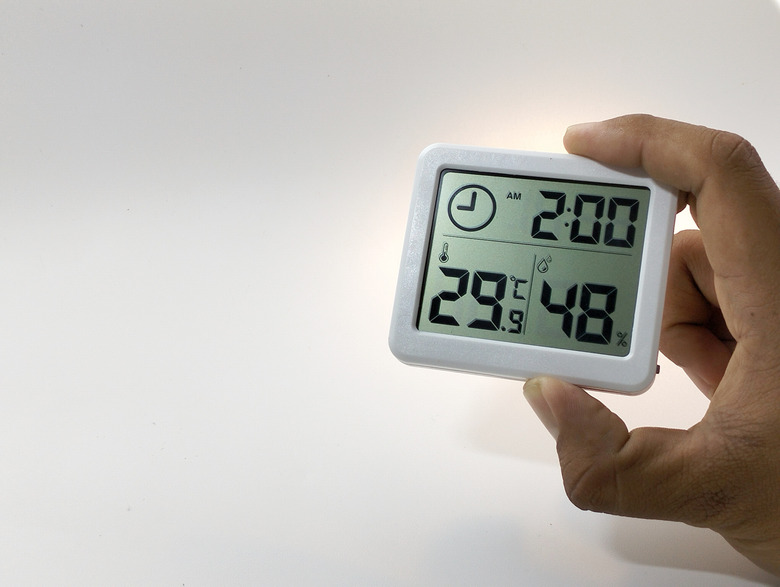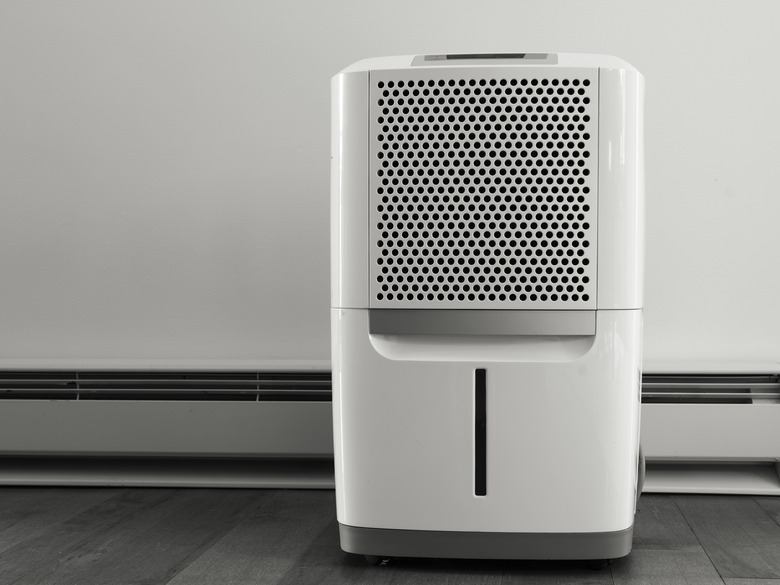Should I Run A Dehumidifier In My Basement In The Winter?
We may receive a commission on purchases made from links.
Whether or not you need to run a dehumidifier in your basement during winter depends on several factors. During the summer, your dehumidifier works to help keep the humidity level in the house low to prevent moisture problems and assist your air conditioner in maintaining your comfort. Depending on where you live, high humidity may not be much of a concern in the winter, meaning running a dehumidifier is simply a waste of money.
However, situations exist when dehumidification in winter is crucial for the well-being of the house, especially in the basement. Let's take a look at some facts to determine whether you should run a dehumidifier in your basement in winter.
Winter Dehumidifying Pros and Cons
Winter Dehumidifying Pros and Cons
Running a dehumidifier in the winter shares some of the same goals as running it during the summer. The main difference is that there is typically less moisture to contend with when the temperature drops. The pros and cons of dehumidifying the basement during the winter are similar to those during summertime.
Pros
- Inhibits mold growth
- Dehumidifier does not have to work hard due to already drier air
- Reduces dust mites and allergens
- Humidity setting can leave some moisture for comfort
Cons
- Dehumidifier requires maintenance and could freeze if running in low indoor temperatures
- Raises your electric bill
- Can make the air too dry for comfort
Consider Your Local Climate
Consider Your Local Climate
The outdoor air temperature during the winter months plays a key role in determining whether or not you need a basement dehumidifier. Simply put, warm air can hold more water vapor than cold air. The warmer it is outside, the higher the potential that dampness can linger in your home, basement, or crawl space. Those living in warm, humid climates may need a dehumidifier in their basement year-round.
That's not to say that conditions in cooler climates never warrant running a dehumidifier. Winter temperatures in moderate to cool regions can often vary from below-freezing to near-beach weather. If you live in a mild climate, keep a dehumidifier on hand in case you need one. Homes in dry climates in which humidity levels are relatively low year-round typically do not need dehumidification at any time unless there's a water leak, flooding, or other source of excess water in the home.
Monitor Your Home’s Humidity
Monitor Your Home's Humidity
Regardless of the climate in your location, the water vapor content (humidity) in your basement is the most crucial factor when deciding whether or not to run a dehumidifier during cold weather. A hygrometer is a device that measures the vapor content in the air and reports the value as relative humidity (RH) — the percentage of water in the air compared to the maximum amount of water the air can hold at the given temperature. For general comfort and the health of your home's structure, an RH of 30 to 50 percent is ideal.
Mold, mildew, and many other allergens like it best when it's warm and damp, which is typically a summertime problem. However, wintertime isn't immune to humidity issues. Your HVAC system may even have a humidifier to put water back in the air.
In winter, you're more likely to close windows and less likely to run fans, which can result in stagnant air pockets that can harbor water vapor. Foundation leaks from melting snow can also be a source of water vapor buildup in basements, even in newer homes. In these cases, you may need a dehumidifier in your basement to protect it from mold damage.
To know for sure, purchase a portable hygrometer, like this one from Govee, to measure the RH percent in various locations around your home, including the basement or crawl space. Run your dehumidifier if you find an RH percent above 50 percent and the temperature is above 60 degrees.
How Much Does It Cost to Run a Dehumidifier in the Winter in a Basement?
How Much Does It Cost to Run a Dehumidifier in the Winter in a Basement?
The average cost to run a dehumidifier is around 9.5 cents per hour (or $2.28 per day) and ranges from 3 cents to 16 cents per hour depending on the humidifier's size, how hard it has to work or how much air it must move to be effective, and your electric utility rate.
Compared to the potential costs of removing mold from your basement, the money is worth it if you need to run a dehumidifier to prevent a moldy situation. However, there are ways to save some cash while maintaining the air quality in your home.
Eliminate Sources of Basement Moisture
Eliminate Sources of Basement Moisture
Wintertime air is typically cooler and drier than air in other seasons no matter where you live. It's easy to understand that when it's humid outside, water vapor in the air can easily make its way into the home and basement. It can be trickier to identify the source of dampness in the wintertime. Often, finding and eliminating or reducing humidity sources can limit the need for a dehumidifier any time of year.
In winter, excess humidity in the home usually comes from within the house. Cooking, showering, laundry, water leaks, snow melt intrusion, or even water vapor expelled from curing concrete in new homes are all sources of wintertime humidity in the home.
- Check your foundation walls and floor for moisture intrusion through cracks to combat house-borne humidity. Fill all cracks and gaps where moisture or humid air can get in.
- Ensure that your rain gutter downspouts deposit water well away from the house and that the ground around the house slopes away from the foundation.
- Inspect your plumbing for leaks and condensation. Stop leaks of any size, and insulate water supply pipes to prevent condensation (and save energy).
- Run kitchen and bath ventilation fans after cooking or showering.
Define Your Comfort Zone
Define Your Comfort Zone
Your home provides a place of comfort — or at least it should. Dehumidifiers improve the air quality in the house while fighting off unwanted pollutants, like mold, allergens, and dust mites. However, they can do too good of a job and create air that's too dry for comfort.
Depending on the weather at any given time during the winter, heat from your furnace or boiler may not be enough to create entirely comfortable conditions. Many homes are equipped with both a dehumidifier and a humidifier to fine-tune the relative humidity level for truly comfortable indoor air.
Though you may not spend much time in your basement, moist air can rise into the living space of your house. Therefore, controlling the humidity in the basement during the winter is crucial to keeping it out of your living room and bedrooms.
Use a portable dehumidifier or whole-house unit, humidifier, hygrometer, fans, and thermostat together to create an atmosphere in your basement with a humidity level between 30 and 50 percent. Doing so will reduce the chance of mold, allergens, and other problems while keeping you and your family warm, snug, and worry-free in your home.



